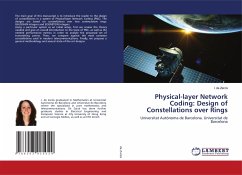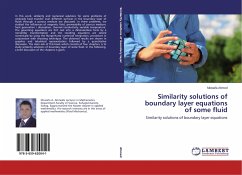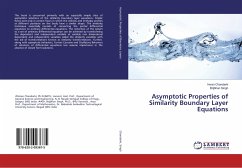
Physical-layer Network Coding: Design of Constellations over Rings
Universitat Autònoma de Barcelona. Universitat de Barcelona
Versandkostenfrei!
Versandfertig in 6-10 Tagen
29,99 €
inkl. MwSt.

PAYBACK Punkte
15 °P sammeln!
The main goal of this manuscript is to introduce the reader to the design of constellations in a system of Physical-layer Network Coding (PNC). The designs are based on constellations over two commutative rings: GAUSSIAN Integers and EISENSTEIN Integers. Using a particular system as an initial setup, first we review the theory needed and give an overall introduction to the topic of PNC, as well as the needed performance metrics in order to analyse the proposed set of transmitting points. Then, we compare against the most common constellations used in modern telecommunications. Finally, we prop...
The main goal of this manuscript is to introduce the reader to the design of constellations in a system of Physical-layer Network Coding (PNC). The designs are based on constellations over two commutative rings: GAUSSIAN Integers and EISENSTEIN Integers. Using a particular system as an initial setup, first we review the theory needed and give an overall introduction to the topic of PNC, as well as the needed performance metrics in order to analyse the proposed set of transmitting points. Then, we compare against the most common constellations used in modern telecommunications. Finally, we propose a general methodology and several state-of-the-art designs.
The main goal of this manuscript is to introduce the reader to the design of constellations in a system of Physical-layer Network Coding (PNC). The designs are based on constellations over two commutative rings: GAUSSIAN Integers and EISENSTEIN Integers.
Using a particular system as an initial setup, first we review the theory needed and give an overall introduction to the topic of PNC, as well as the needed performance metrics in order to analyse the proposed set of transmitting points. Then, we compare against the most common constellations used in modern telecommunications. Finally, we propose a general methodology and several state-of-the-art designs.
The main goal of this manuscript is to introduce the reader to the design of constellations in a system of Physical-layer Network Coding (PNC). The designs are based on constellations over two commutative rings: GAUSSIAN Integers and EISENSTEIN Integers.
Using a particular system as an initial setup, first we review the theory needed and give an overall introduction to the topic of PNC, as well as the needed performance metrics in order to analyse the proposed set of transmitting points. Then, we compare against the most common constellations used in modern telecommunications. Finally, we propose a general methodology and several state-of-the-art designs.












